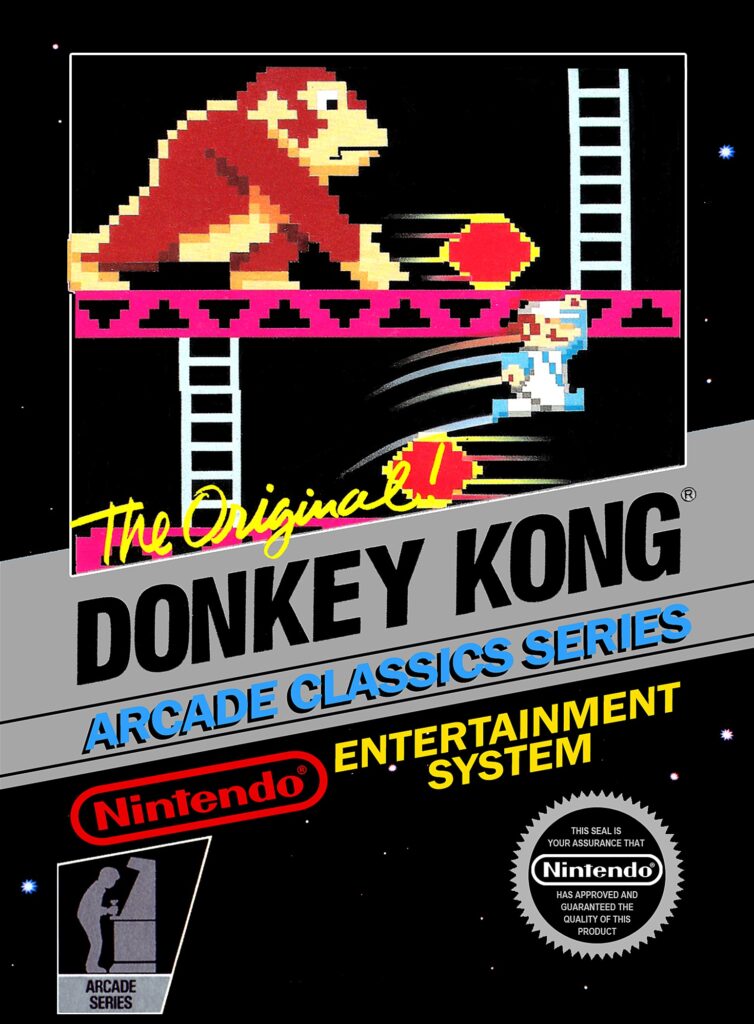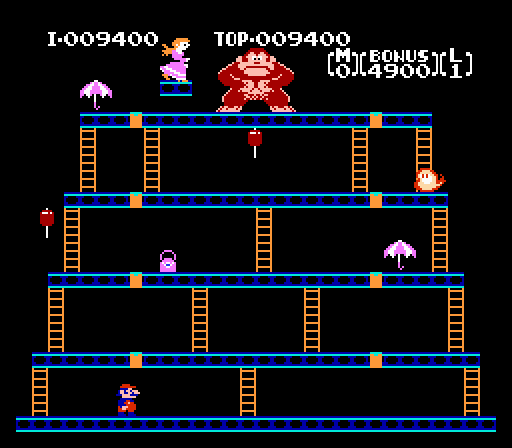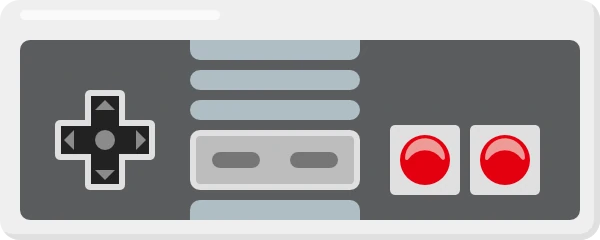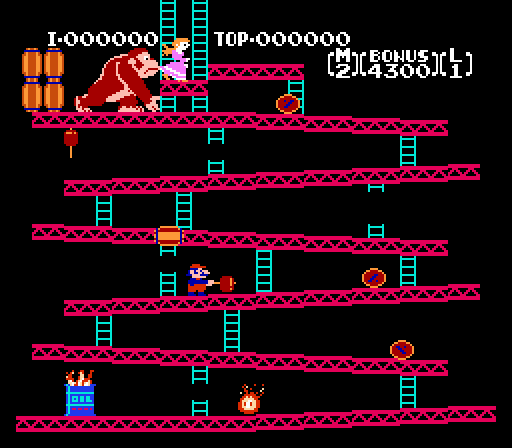Nintendo cashes in.


PLAYERS: 1-2 alternating
PUBLISHER: Nintendo
DEVELOPER: Nintendo
GENRE: Arcade
RELEASE DATE: June 1986
I don’t know if one can overestimate the impact the original Donkey Kong has had on games. Here’s a few facts that most everybody already knows:
-
Donkey Kong introduced Mario (known at the time as “Jumpman”), Donkey Kong, and the concept of saving a woman to video games. While Pauline is not Princess Toadstool, Daisy or Peach, she is definitely the prototype for the ladies that would later get rescued by Mario.
-
Donkey Kong essentially created the platform genre, albeit in a very simplistic form. The original arcade game consisted of four entirely different levels, and involved avoiding or destroying enemies with a hammer, collecting items like hats and umbrellas for points, and going from one end of the stage to the other.
-
Donkey Kong was Miyamoto’s third game with Nintendo (the first two were Sheriff and Radar Scope and it was hugely successful in Japan and America.
-
The success of Donkey Kong (the game made $280 million in two years… in early 1980’s money) arguably paved the way for the release of the Famicom and the Nintendo Entertainment System.
So yeah, without Donkey Kong, Mario, platformers, and the console gaming scene as we know it today may have been postponed. I won’t say these things would have never happened, as I believe it would have been inevitable, but the release and success of Donkey Kong made them happen faster.
The game itself is still fun today, although it is very much a product of its time. Jumpman jumps and climbs and maneuvers his way around three very small levels (for whatever reason, the NES release omitted the cement factory level from the arcade game) to reach Pauline at the top. Once you beat these levels – and if you’re any sort of gamer, they should only take you about five minutes – you play them again and again and again, with the momentum of the enemies increasing each playthrough. Despite Donkey Kong being one of the first examples of a platformer, its identity is still very much tied into the point system of late 70s, early 80s arcade games. The point is to, well, get points, not to reach the end of the game. The problem that I think Donkey Kong has now – and I think Nintendo tried to address by releasing Donkey Kong ’94 – is that it feels stuck in limbo between a platformer and a points-based game, and it doesn’t really succeed well at one or the other. This is not to say that I think the game is bad or that its impact is lessened by this fact. Donkey Kong was treading new ground and Miyamoto was ahead of his time by trying to throw an honest-to-God story in the game. But playing it thirty years (!) since its release in the arcades, it’s very obvious that it’s suffering from an identity crisis. Does Donkey Kong want to be this new adventure-type game that’s never been done before or does it want to uphold to the tried-and-true points based method of progression? Let me know in the comments section if you think I’m overstating this or if you think there’s merit to my madness.
I’m grateful for the existence of Donkey Kong even if I don’t feel that it has aged well. It put Nintendo on the map, and without Nintendo, many of my and millions of others’ greatest gaming memories would not have been created. For that, I can only give the maddest of props.
Impact: A+
Actual game: B-
Latest posts by Dylan Cornelius (see all)
- By Request – New Ghostbusters II - April 4, 2014
- The 86 Worst NES Games – Part 4 - April 1, 2014
- The 86 Worst NES Games – Part 3 - March 29, 2014


6 replies on “#182 – Donkey Kong”
I think an argument could be made that Nintendo didn’t even consider that they were making a new game genre. The fact that this game got a sequel in the form of Donkey Kong Jr means that they wanted to repeat the formula of the original.
Yeah I think people forget that the landscape of gaming before the NES was pretty much confined to the arcades. Atari 2600 doesn’t count as shit for me. I went to the arcade to play games. The formula of high score and limited story/repeating levels goin up in difficulty is what made things exciting, since it was a direct social engagement in public. People also forget that it was mind-blowing for that generation to simply be able to play a video game in the first place! That wobbly crt pixellated monitor made it feel alive, like you were entering another dimension. The cabs sometimes also helped enhance that effect with their artistic design choices. It was just the funnest thing in the world. We didn’t even understand that a game could have a real, true campaign story like there is today. So of course it was a success, it adhered to the norm back then. I don’t think it has an identity crisis in the least. DK, and DK Jr., were capitalizing on the way gaming was back then. Primitive by today’s standards, but competitive, social, and fun as hell. And you know what? this feeling is trans-generational. My kids love to play these old arcade games! It’s still fun.
Miyamoto has commented that he wanted to bring a story to gaming; ironic in that Mario and Zelda games today have very limited stories. Still, I see your argument.
Were you ever able to play DK64? I’ll try to sum it up with one word: tacky.
It’s like Nintendo was trying to wring out every last possible byte of capability (w/o expansion pak) and trying to repeat the feel (and success) of Mario 64 and Banjo-Kazooie. They even included a full version of the original Mario bros. game within one of the levels. All that aside, the game is so top heavy and full of pointless crap as to be easily forgotten. The yellow cartridge didn’t help either!
DK on the Game Boy is one of the very best game on the system, far better than the original. I think that, in general, the DK series does not get the respect it deserves as one of the best Nintendo franchise of all time. I personally think that the DK Country trilogy of games are the best platforming games on the SNES. Also, DKC Returns on the Wii is my favorite 2D platformer on the Wii.
Phil
I agree, Phil, that Donkey Kong is a somewhat underrated character, despite all his games. I love DKC 1, 2, (3 was a little lacking) and Returns.